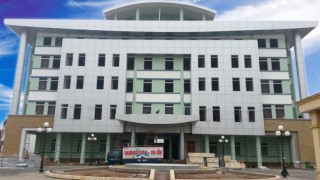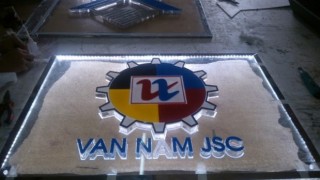Open Engagement Through Science Documentaries: The PBS Model
- Danh mục: nursing
Scientific research documentaries have long played out a pivotal role in enhancing public understanding of intricate scientific concepts and cultivating a greater appreciation for the normal world. PBS (Public Displaying Service) has established a distinctive model in this field, profiting its extensive reach and commitment to high-quality programming to engage audiences with scientific research. This article examines how PBS’s approach to science documentaries properly promotes public engagement, best parts the strategies employed, and also explores the impact of this product on science communication.
PBS has been a trailblazer in providing science documentaries that are equally educational and captivating. Displays such as “NOVA, ” “Nature, ” and “The Universe” exemplify PBS’s dedication in order to providing accurate, engaging content material that appeals to a broad market. The PBS model of scientific research documentaries is characterized by various key elements that contribute to it has the success in public engagement.
Among the central aspects of PBS’s solution is its emphasis on storytelling. Science https://www.smifunding.com/forum/questions-answers/studie documentaries produced by PBS often employ a narrative framework that weaves scientific content into compelling stories. This storytelling approach helps to humanize science, making it more relatable and engaging for viewers. By means of framing scientific discoveries in addition to concepts within the context involving real-world applications and personal experience, PBS documentaries create a interconnection between the audience and the scientific research being presented. This plot technique not only captures viewers’ attention but also enhances their particular understanding and retention connected with scientific information.
Visual storytelling is another hallmark of PBS science documentaries. High-quality looks, including stunning cinematography, animation, and graphics, are used to demonstrate complex scientific phenomena and make abstract concepts more cement. For instance, “NOVA” frequently uses detailed visualizations and hi-tech graphics to explain intricate functions such as the workings of the mental faculties or the dynamics of space exploration. These visuals help demystify science and provide audiences with a clearer understanding of the niche matter.
PBS also prioritizes the inclusion of expert voices and scientific specialist in its documentaries. Interviews with leading scientists, researchers, in addition to experts provide credibility as well as depth to the content. All these experts offer insights into the latest scientific discoveries, make clear the significance of research, along with address common misconceptions. By simply featuring authoritative voices, PBS documentaries ensure that viewers acquire accurate and up-to-date info, fostering trust and confidence in the scientific content presented.
Public engagement through science documentaries is further enhanced by PBS’s commitment to help accessibility and inclusivity. PBS programming is designed to be accessible to some diverse audience, including people with varying levels of scientific knowledge. The use of clear language, easy explanations, and engaging visuals makes certain that complex scientific concepts are presented in a way that is clear to non-experts. Additionally , PBS offers educational resources and also supplementary materials that help viewers’ learning and provide prospects for further exploration of scientific issues.
The PBS model also emphasizes the importance of community outreach and educational initiatives. PBS technology documentaries are often accompanied by instructional programs, interactive websites, and community events that stretch the impact of the content over and above the screen. For example , PBS LearningMedia provides educators with a wealth of resources, including lessons, video clips, and interactive exercises related to science documentaries. These kinds of resources enable teachers to provide documentary content into their sessions and facilitate discussions in relation to scientific topics. Community tests and public lectures more engage audiences and inspire dialogue about science.
The effect of PBS science documentaries extends to fostering a wider public interest in science as well as promoting scientific literacy. Through presenting science in an using and accessible manner, PBS documentaries contribute to a greater gratitude for scientific inquiry and also discovery. They help viewers understand the relevance of research in everyday life and inspire curiosity about the natural world. This improved public interest in science can result in more informed decision-making, increased support for scientific analysis, and a stronger commitment to help addressing global challenges such as climate change and public health.
PBS’s model of science documentaries also plays a role in shaping the actual public’s perception of research and scientists. By featuring the dedication and expertise of researchers and showcasing the excitement of medical exploration, PBS documentaries play a role in a more positive and appropriate portrayal of science as well as scientists. This representation allows you counteract stereotypes and beliefs, fostering a greater respect for that scientific community and its efforts to society.
The PBS approach to science documentaries has become widely recognized for its effectiveness in public engagement. The success regarding programs like “NOVA, ” “Nature, ” and “The Universe” demonstrates the power of top quality, well-produced science documentaries to captivate and educate viewers. The combination of compelling storytelling, visual excellence, expert information, and accessibility ensures that PBS science documentaries reach and resonate with a broad visitors.
Looking to the future, the PBS model of science documentaries may continue evolving and having to new technologies along with platforms. Advances in digital media, virtual reality, and interactive content offer completely new opportunities for enhancing open engagement with science. PBS’s commitment to innovation as well as excellence in science interaction will be essential in looking for ways these new frontiers along with continuing to inspire and also inform audiences.
PBS’s approach to science documentaries represents a strong model for public wedding and science communication. By compelling storytelling, high-quality graphics, expert insights, and a motivation to accessibility, PBS provides successfully fostered a greater thanks for science and advertised scientific literacy. As the discipline of science communication are still evolve, PBS’s model will probably remain a valuable blueprint intended for engaging and educating the general public about the wonders of scientific disciplines.


























